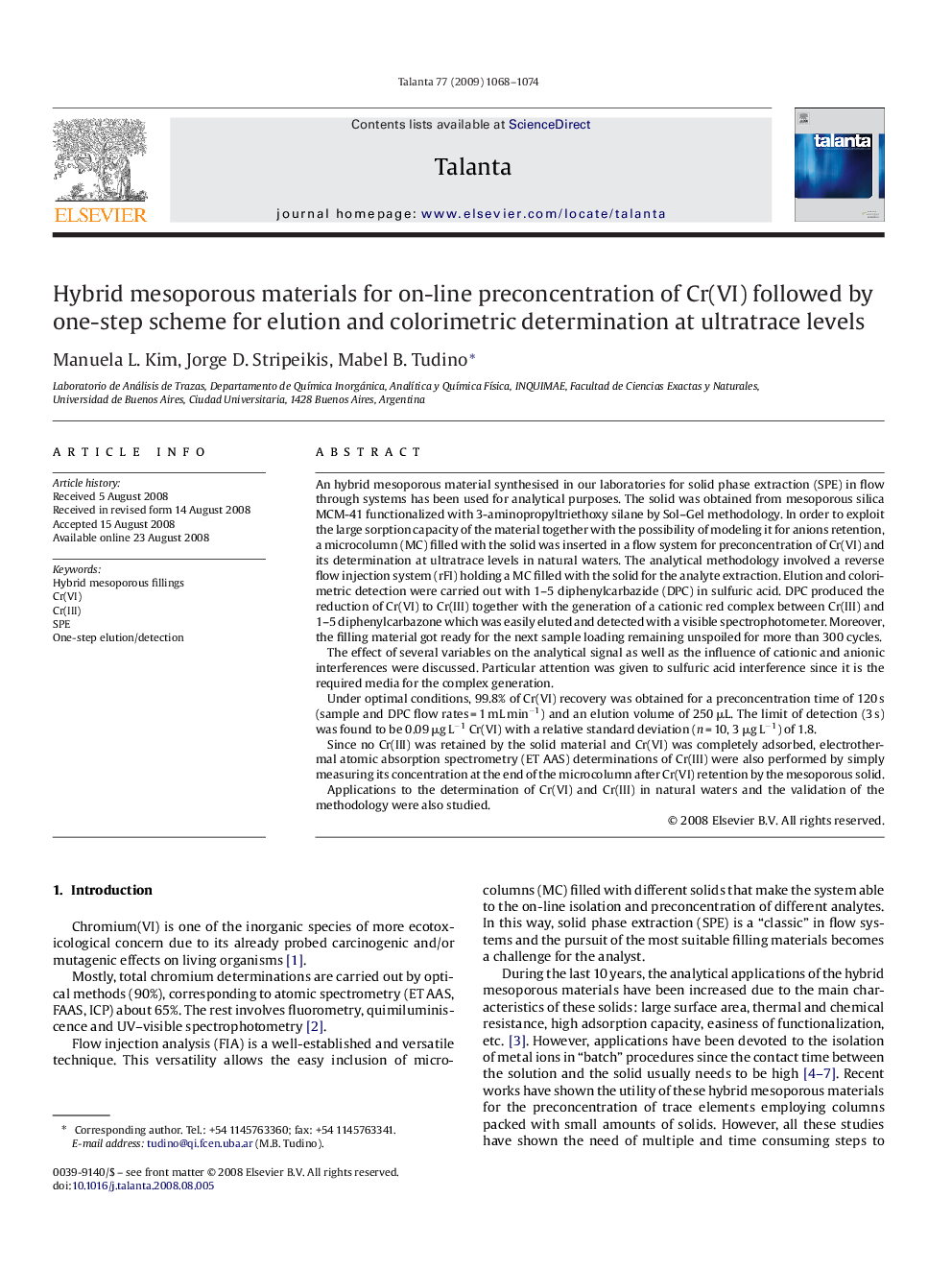| Article ID | Journal | Published Year | Pages | File Type |
|---|---|---|---|---|
| 1247039 | Talanta | 2009 | 7 Pages |
An hybrid mesoporous material synthesised in our laboratories for solid phase extraction (SPE) in flow through systems has been used for analytical purposes. The solid was obtained from mesoporous silica MCM-41 functionalized with 3-aminopropyltriethoxy silane by Sol–Gel methodology. In order to exploit the large sorption capacity of the material together with the possibility of modeling it for anions retention, a microcolumn (MC) filled with the solid was inserted in a flow system for preconcentration of Cr(VI) and its determination at ultratrace levels in natural waters. The analytical methodology involved a reverse flow injection system (rFI) holding a MC filled with the solid for the analyte extraction. Elution and colorimetric detection were carried out with 1–5 diphenylcarbazide (DPC) in sulfuric acid. DPC produced the reduction of Cr(VI) to Cr(III) together with the generation of a cationic red complex between Cr(III) and 1–5 diphenylcarbazone which was easily eluted and detected with a visible spectrophotometer. Moreover, the filling material got ready for the next sample loading remaining unspoiled for more than 300 cycles.The effect of several variables on the analytical signal as well as the influence of cationic and anionic interferences were discussed. Particular attention was given to sulfuric acid interference since it is the required media for the complex generation.Under optimal conditions, 99.8% of Cr(VI) recovery was obtained for a preconcentration time of 120 s (sample and DPC flow rates = 1 mL min−1) and an elution volume of 250 μL. The limit of detection (3 s) was found to be 0.09 μg L−1 Cr(VI) with a relative standard deviation (n = 10, 3 μg L−1) of 1.8.Since no Cr(III) was retained by the solid material and Cr(VI) was completely adsorbed, electrothermal atomic absorption spectrometry (ET AAS) determinations of Cr(III) were also performed by simply measuring its concentration at the end of the microcolumn after Cr(VI) retention by the mesoporous solid.Applications to the determination of Cr(VI) and Cr(III) in natural waters and the validation of the methodology were also studied.
